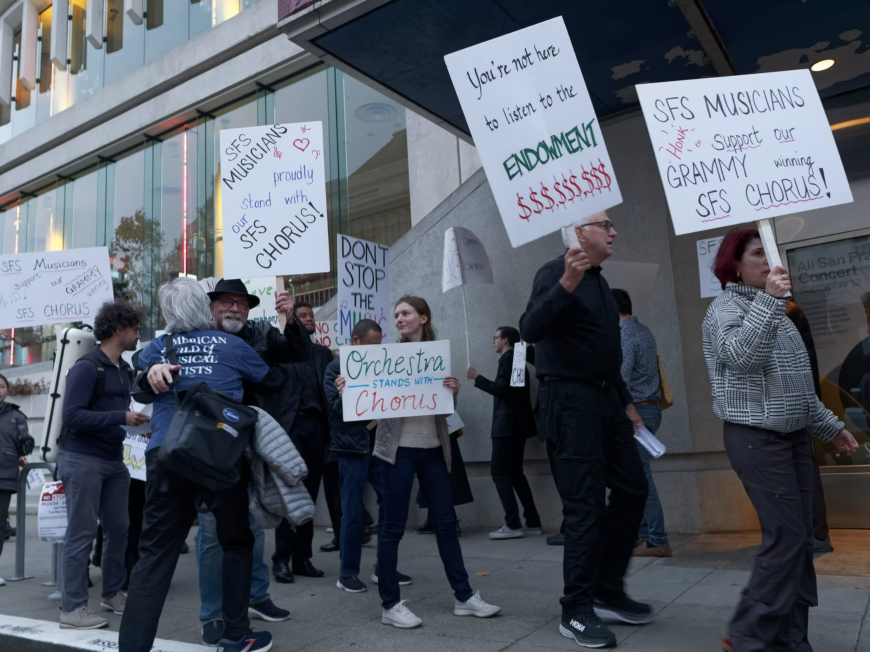
Update: On Sept. 12, SF Symphony and AMF Local 6 announced an agreement on a three-year collective labor contract.
On Sept. 4, Musicians of the San Francisco Symphony Orchestra gave notice of a strike authorization, enabling union executives to declare a strike if it’s deemed necessary. This comes one year after the San Francisco Symphony Chorus boycotted the SFS season opening due to labor disputes, prompting management to cancel concerts.
The notice by American Federation of Musicians Union Local 6 (the labor union that represents the SFS musicians) specifies that “the strike authorization allows for a labor action to take place at any time, which could come in the near future if a fair agreement is not reached.”
According to Thursday’s statement by Local 6, “Symphony leadership has not presented a contract that offers fair compensation, values artistic leadership, restores vital programming, or establishes proactive fundraising efforts and transparent financial practices.”
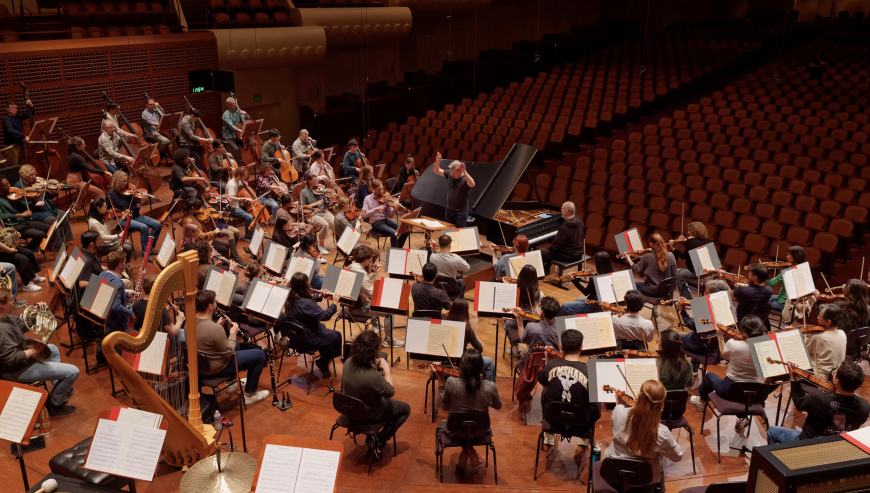
If a strike begins this week, the initial impact would involve the San Francisco Symphony’s All San Francisco Concerts on Sept. 11–13, the opening gala on Sept. 12, and the beginning of the regular season on Sept. 18. A strike in 1997 lasted for nine weeks, and the last SFS strike took place in 2013.
These events are taking place against the background of continuous problems in reaching a Collective Bargaining Agreement (CBA), stretching back even before the major disruption of the pandemic.
A crisis took place in 2022-2023 when the musicians worked without a contract for over 300 days, but the threat of a strike was avoided by a temporary arrangement. The last two-year CBA expired on Nov. 23, 2024, followed by temporary extensions, first through Jan. 18, 2025, and then through April 26. Since then, some 130 days ago, the musicians have worked without a contract.
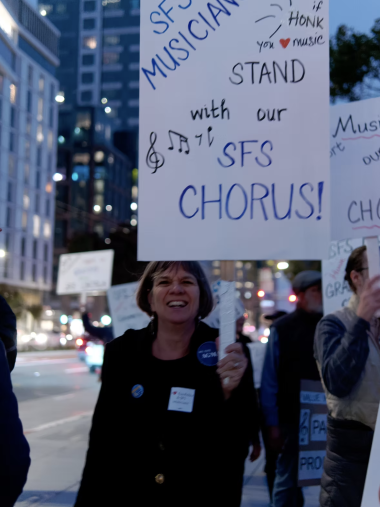
Violist Dave Gaudry, chair of the Musicians’ Negotiating Committee, said “It has become clear that we have no choice but to plan for a strike. The proposals presented to us are still far below the bare minimum of what an acceptable offer looks like.”
The union’s statement went beyond issues of compensation by questioning “organizational leadership, programming, and the financial health of the institution. A year after the high-profile and unexpected departure of the Symphony’s music director due to disagreements with management and the board, there is still no new announced music director, no plan to resume touring, no plan to restore programming, and no known plans from the board to fundraise or increase philanthropy.”
The SF Symphony administration responded by saying “the negotiations have reached a critical juncture. This week, the administration presented its ‘Last, Best, and Final’ offer... a wage increase that brings the new starting minimum salary to $189,000.”
The three-year proposal starts at a $3,641 minimum weekly scale (MWS) in the first year, representing a 5.5% increase above the current level. Each subsequent year provides 2% increases — $3,714 in contract year 2025–2026 and $3,788 in 2026–2027. The SFS management offer is for a three-year contract, retroactive to Nov. 24, 2024, to run through Nov. 22, 2027.
According to the administration’s statement, “The proposal also provides for an increase to the defined benefit pension plan, making it the second highest in the industry, as well as exceptional health benefits and 10 weeks of paid vacation annually. This is an extremely strong offer that also requires us to take risks, stretching financially to meet the new contract terms in the years to come. It also demonstrates our faith in the future of this organization and our deep commitment to our musicians and this community.”
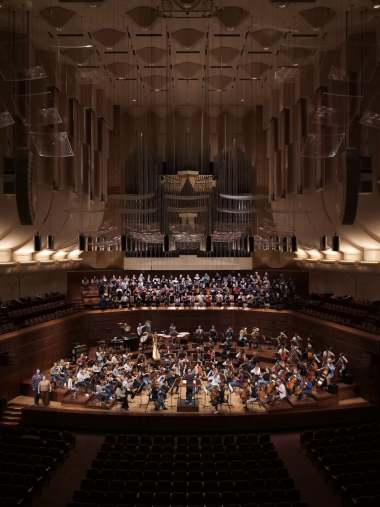
The proposed pension, according to SFS, is “a maximum annual defined benefit pension of $84,000 (a 2.43% increase from the current benefit) — the second-highest pension benefit among orchestras in the U.S. and a rare benefit among most industries today.”
As listed by SFS, there are “many forms of additional variable compensation,” including overtime, seniority pay, run-out fees (that is, for concerts outside of Davies Symphony Hall), and soloist and small ensemble fees, among others. Musicians also earn additional compensation for optional activities, including Community Chamber Concerts, the chamber series at Davies Symphony Hall, and SFS Youth Orchestra coaching.
Symphony health care provides a choice of comprehensive medical insurance plans, absorbing all costs, while requiring “modest contributions from individual musicians, ranging from $7 to $38 per week.” The latest contract offer also continues to provide 10 weeks of paid vacation.
The Sept. 4 communique from Local 6, issued before the Symphony sent out its recent statement, continues explaining the union's position:
“During the Covid-19 pandemic, the musicians accepted pay reductions to support the organization. As of May 2025, these salaries have not been fully restored to pre-pandemic levels. The musicians are the only group among peer orchestras whose pay has not been fully reinstated post-pandemic. Yet, Symphony management has not only restored their own salaries to pre-pandemic levels but have dramatically increased non-musician salaries along with spending on administrative/non-artistic matters.
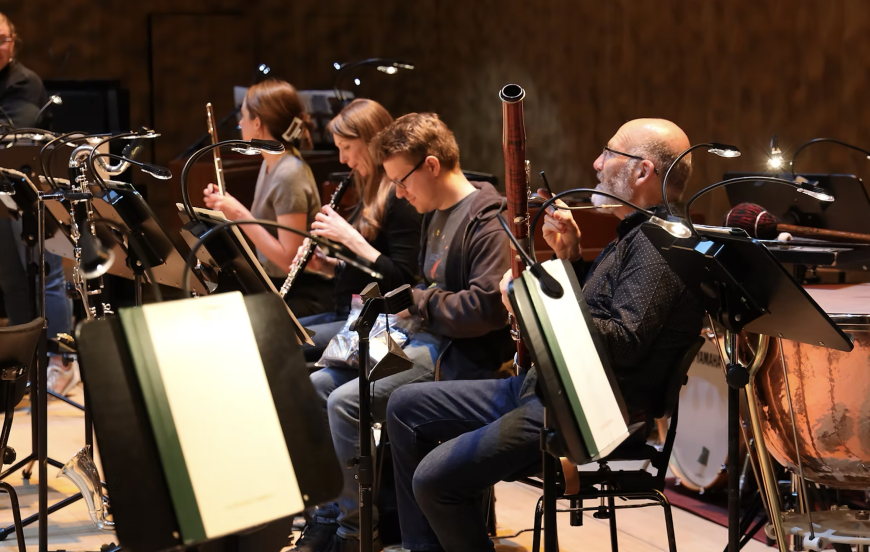
“Symphony leadership has claimed multiple times that the organization is facing financial hardship, citing a cumulative deficit of $116 million over the past decade. But, as the musicians pointed out, that number excluded multiple sources of revenue, including $24 million in government pandemic assistance, $33 million in gains on pension assets and $164 million in market returns on the SFS’s invested assets. The latest audited financial report states that over $119 million is available for appropriation in the endowment, $58 million of which is available for appropriation without any donor restrictions.
“In apparent recognition that their claimed $116 million cumulative deficit number was wrong, leadership suddenly shifted its position in May 2025, claiming that instead of their prior 10-year number, there was actually a 15-year $46 million deficit, reaching back to capture the losses from the great recession of 2009. Contrary to these claims, the facts, including the omitted revenue sources, show a $106 million net gain from 2013 through 2023.
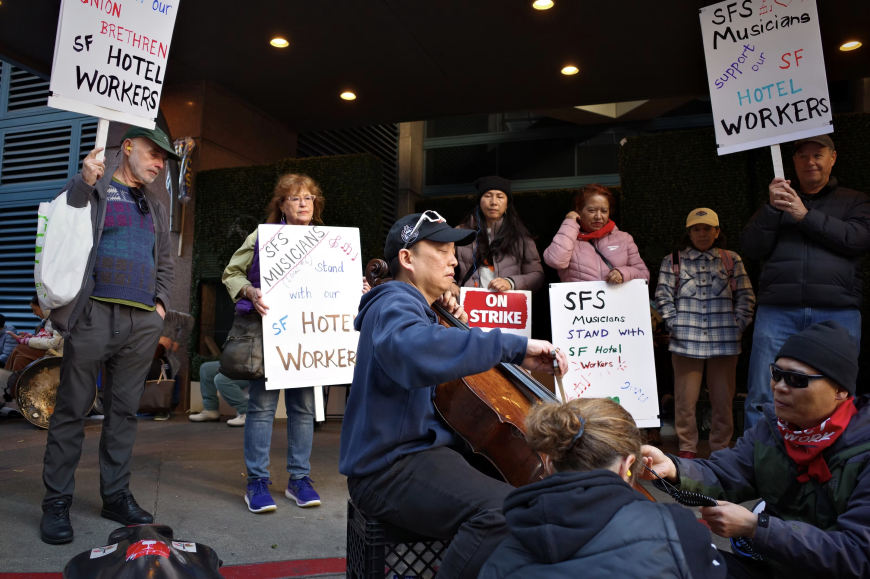
“Since the Symphony initially made their deficit claims in March 2024, the latest publicly available audited financial statement from the end of the 2024 fiscal year shows that total net assets grew an additional $28.8 million — now totaling $404.5 million.”
The musicians are seeking assurances including, “Restoration of salaries to levels promised in the 2018 contract, adjusted for inflation, to remain competitive with peer institutions; appointment of a world-class music director with board support for their artistic vision… reinstatement of cut programming and touring activities; financial transparency and fundraising... to ensure the Symphony’s sustainability.”
The orchestra has a number of vacancies because of retirements and musicians leaving for positions elsewhere. Two members of the horn section and a member of the trombone section obtained principal positions in other orchestras; a violinist became the associate concertmaster of the Seattle Symphony. Two members of the trombone section are on leave this year.




